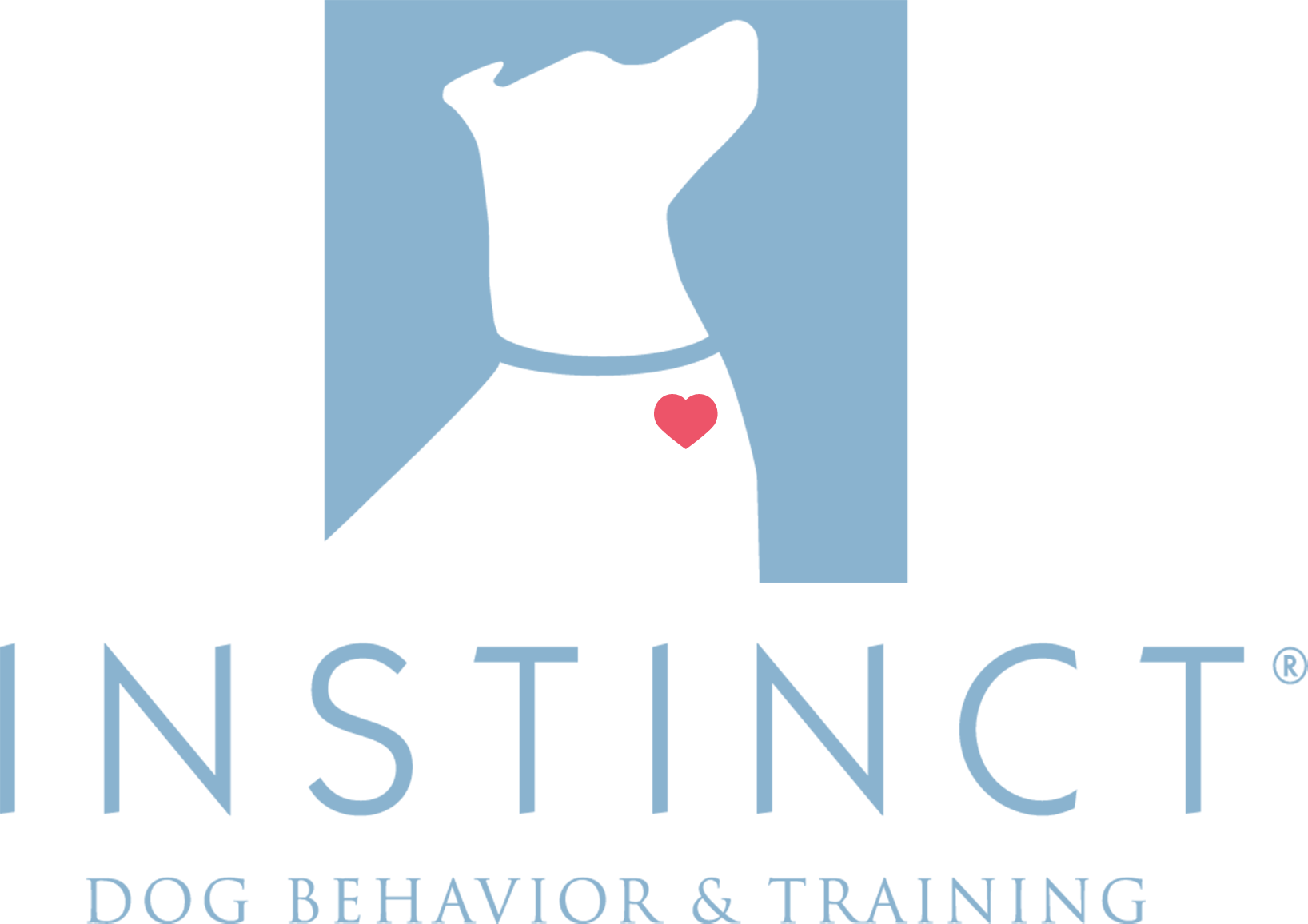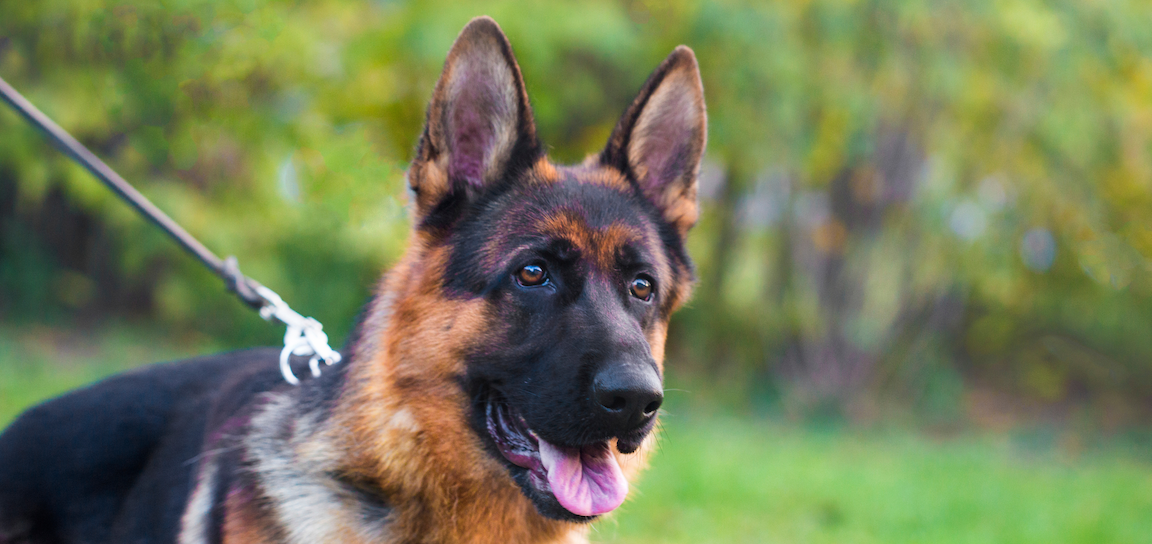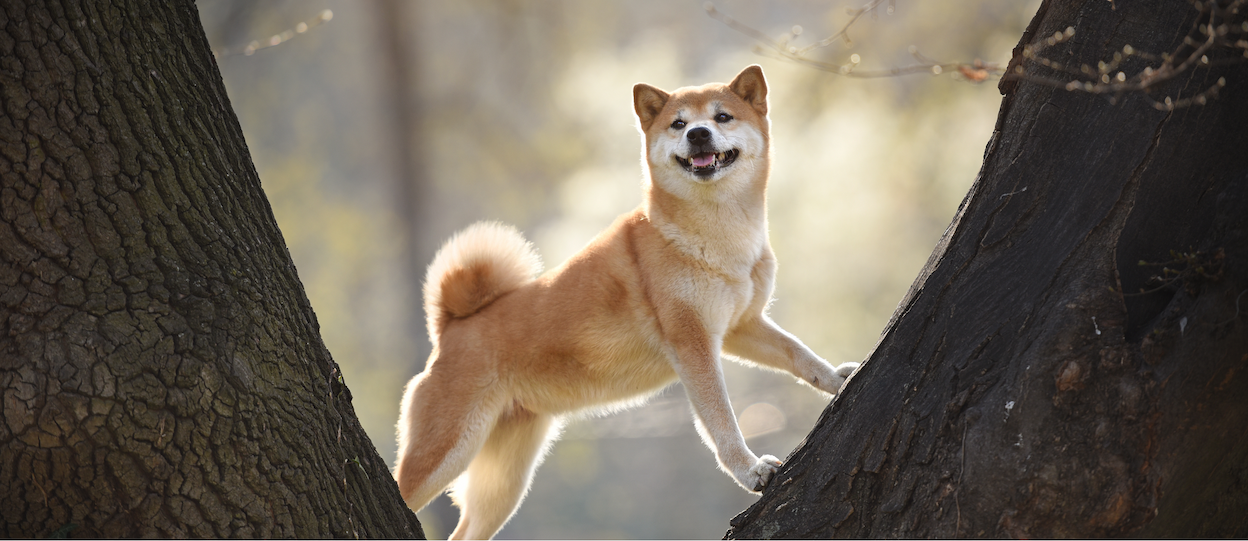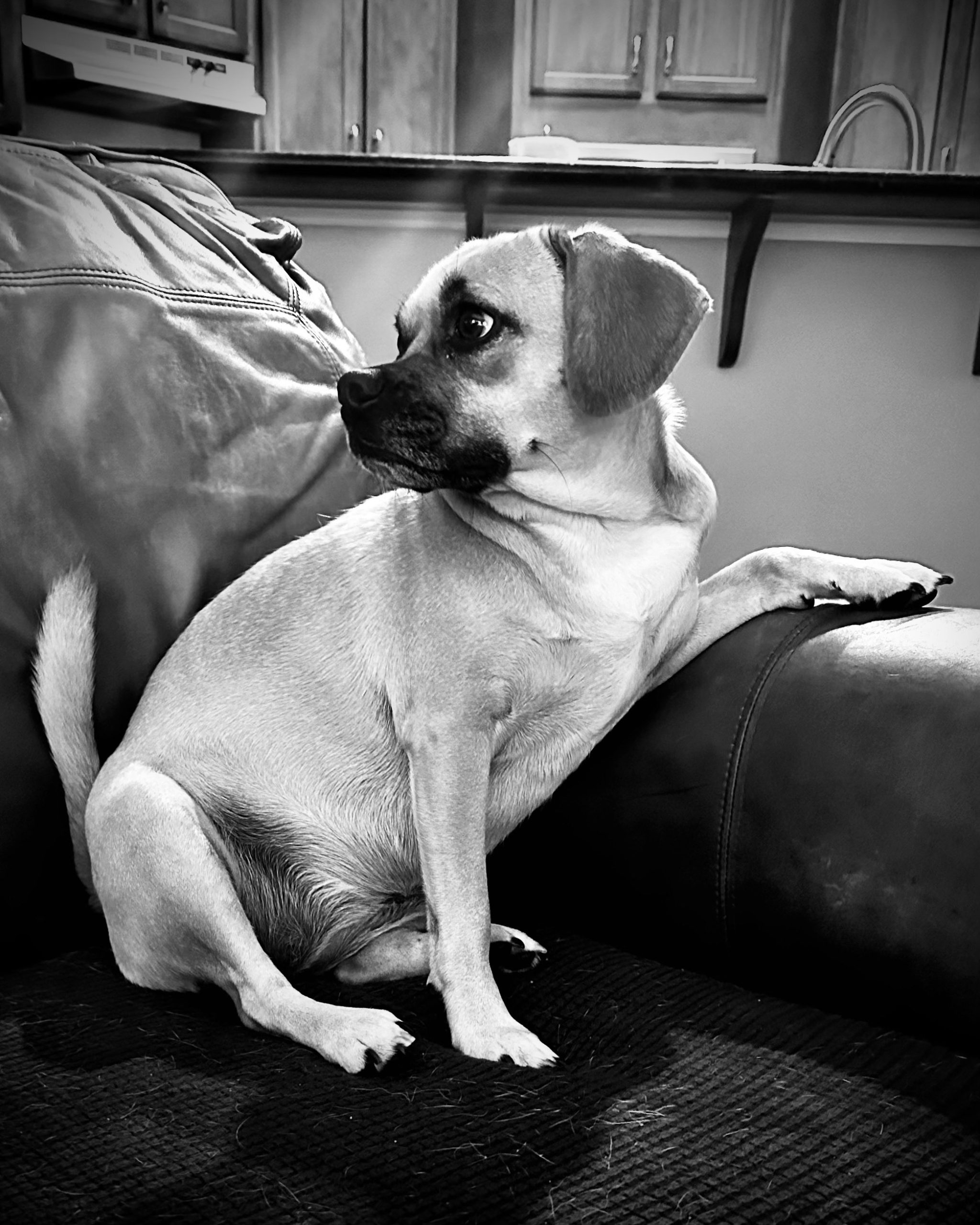Are You Putting Your Dog’s Safety at Risk in Public?

Welcome to week’s blog.
This week, we are highlighting four of the most common ‘high risk’ behaviors we see otherwise caring, responsible dog owners engage in when out in public with their dogs—along with simple ways to adjust those behaviors to better protect the safety of everyone in the community.
Happy Reading,

Four Common Ways We Put Our Dogs’ Safety at Risk in Public
If you are reading this blog, odds are you’re a smart, considerate, responsible dog owner who cares a whole lot about your dog’s safety and the safety of others in your community.
These are the types of amazing dog owners we are lucky to work with every day at Instinct. AND, despite the level of care and personal responsibility our clients display, many of them have at least a couple of big blind spots when it comes to protecting the safety and wellbeing of both their dog, and others in their community, when out in public.
Below, we review four common ways we see otherwise amazing, smart, caring and responsible dog owners put their dogs’ safety at risk, while placing other dogs and people in uncomfortable—and sometimes dangerous—situations.

If you have a super friendly dog who loves meeting people and other dogs, it is easy to assume those friendly feelings will be reciprocated by others (or at least, to assume that others will be unbothered by the approach of a sweet, happy dog).
But there are so many dogs and people who feel uncomfortable about another dog entering their personal space uninvited. These individuals may be fearful, reactive, or aggressive. They may have health conditions (physical or otherwise) that make the approach of an unfamiliar dog feel unsafe for them. Or they may just be busy, distracted, or have other priorities.
Allowing your dog to pull up close to people or other dogs indiscriminately can be an annoyance to others at best. But it’s also a real risk to your dog’s safety—many dogs will respond with aggressive behavior if an unfamiliar dog invades their personal space on leash.
TRY THIS INSTEAD:
To reduce risk to your dog and keep others safe & comfortable, follow these three simple guidelines:
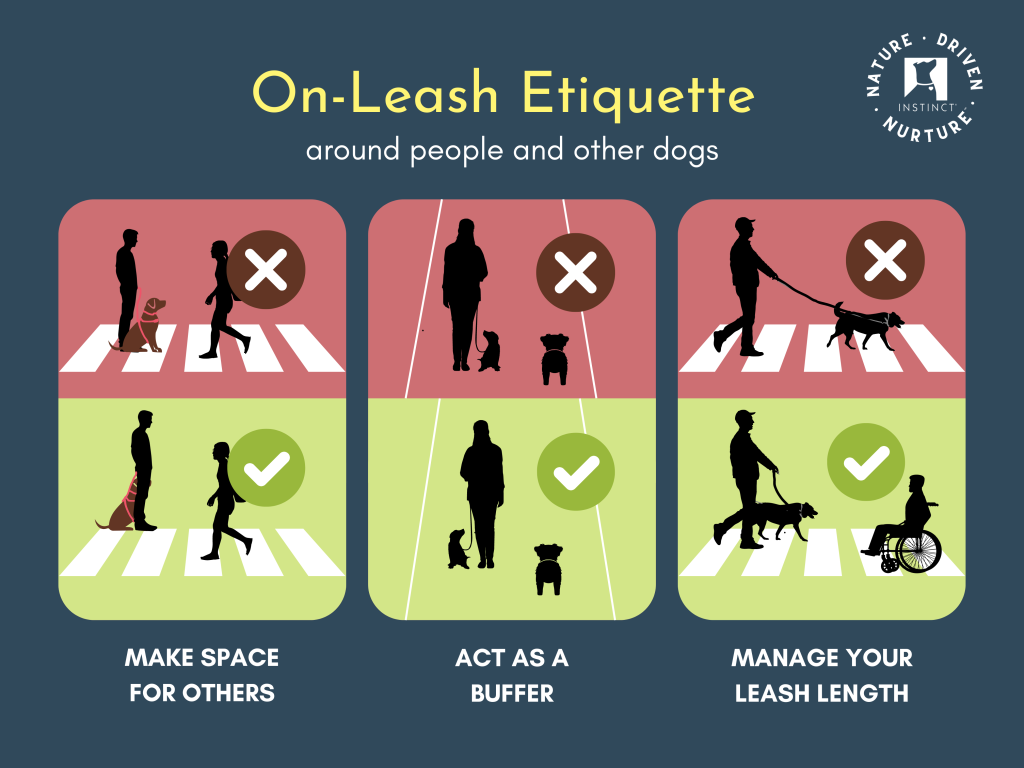
If you and your dog are standing still in the presence of people/other dogs:
- Step off to the side to allow ample room for others to pass by without needing to come within contact distance of your pup
- Keep your dog’s leash at a length where they are unable to invade someone else’s personal space bubble as they pass by
If you and your dog are walking in the presence of people/other dogs:
- Position yourself so you are between your dog and the person/other dog as you pass by—like doing an Arc-By, but without the arcing motion (unless your dog needs the arc to feel comfortable, or unless the other dog appears to be on the verge of reacting).
- Again, keep your dog’s leash at a length where they are physically unable to come in contact with the person/other dog they are passing, should they pull out to the end of their leash
- In my humble opinion, this should be the default dog walking etiquette. This small change would drastically reduce the rate of reactivity in dogs, and it would also reduce the number of snaps/bites that occurred with people passing by.
Creating a buffer and staying out of others’ personal space allows other dogs and people to feel comfortable, confident, and safe in your presence.
AND, it keeps your dog out of reach of dogs who may be reactive or aggressive, or people who may be overbearing/overwhelming to your dog. Your dog will get barked at, growled at, and snapped at WAY less frequently. The fewer negative experiences your dog has, the less likely they are to become uncomfortable (and potentially reactive) about other dogs or people passing by.

Some dogs truly relish the attention of strangers. One of our original Helper Dogs, Buster, was this way. He was a true social butterfly and loved nothing more than to be doted on by strangers.
Even so, we didn’t allow strangers to wrap their arms around him in a hug or lean in to kiss him on the head. We prevented them from just reaching out and giving him an unsuspecting pat, instead creating a bit of space and allowing him to approach them to initiate the interaction (which he chose to do 98% of the time).
And, we watched for signs that he was done saying hello (sniffing the ground, turning his body away, staring off into the distance) and created space for him when those signs appeared.
Why go to such lengths with a super friendly, social dog who loves people? Because we wanted him to stay super social and friendly. And, because all of us, no matter how extroverted, like to feel as though we are in control of when, how, and how long others are allowed into our personal space.
Protecting your dog’s personal space for them becomes even more important if they are shy, cautious, fearful, or reactive with people, or if they are a young puppy. Otherwise, these dogs will quickly learn that it’s up to them to figure out how to stop unwanted interactions and create space for themselves.
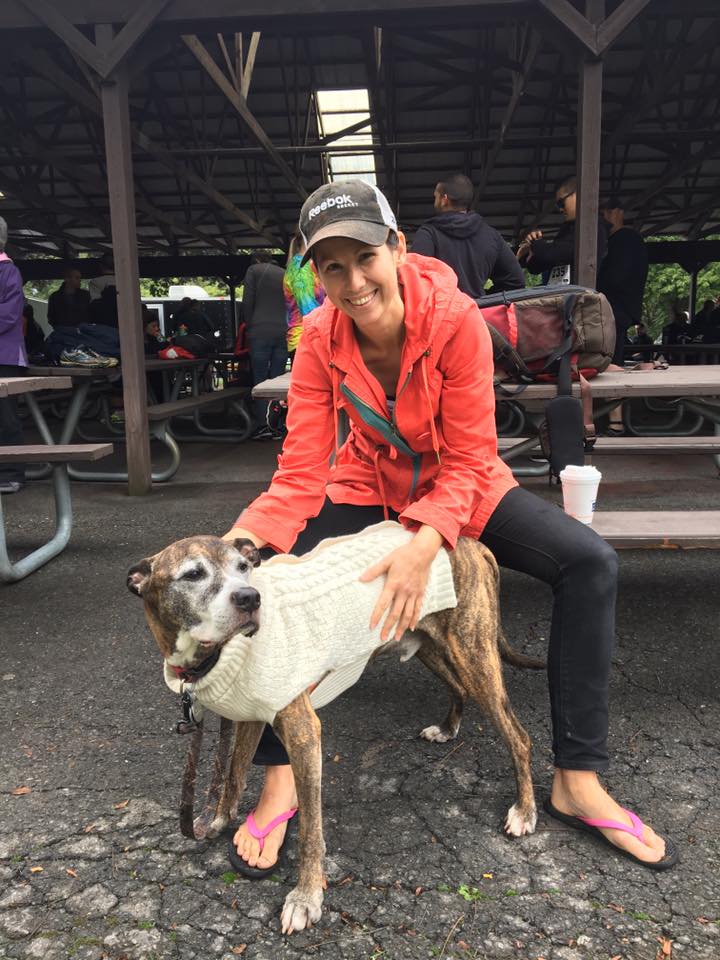
How to Protect Your Dog’s Personal Space:
There are lots of different techniques you can use to protect your dog’s personal space in public. And, because setting boundaries with strangers can feel awkward or uncomfortable for many, it’s important to find the approach that feels most comfortable and natural to YOU—one that allows you to be kind but firm in advocating for your dog’s needs.
When it comes to human strangers approaching, phrases like: “Oh, could you wait there please, he/she likes to be the one to approach” can be very effective—assuming your dog is social with unfamiliar people.
For more detailed suggestions on how to keep people from invading your dog’s personal space uninvited, you can check out this blog on effective boundary setting, and this blog on utilizing the Protector Position with your dog.
When it comes to protecting your dog’s personal space around other dogs on-leash, your best bet is generally just going to be a calm, quick “abort” away from the approaching dog via a u-turn or a wide arc-by (see our video on defensive handling here).

You want to give your dog the opportunity to socialize—we get it. And many folks just assume that taking your dog or puppy to the dog park is what you’re supposed to do.
But dog parks and other off-leash play spaces filled with unfamiliar dogs present unique challenges and risks, and are really only suitable for a small subset of dogs with certain personality traits, behavior profiles, and training skillsets.
Here are three common categories of dogs who are most often better off skipping the dog park:
Newly Adopted Adult Dogs
Until you know your new dog and their behavior profile a little better, until they have a chance to feel fully settled and comfortable in their new home, until you develop a deeper connection with them AND until you build up some responsiveness around distractions, it’s best to avoid the dog park.
Try this Instead: Seek out low-stress interaction opportunities like parallel leash walks with a friend’s sociable dog, followed by a mellow one-on-one play session in a neutral space.
Puppies
Puppies are in the process of forming their view about the world and the dogs and people in it. They are super impressionable to negative experiences, are easily overwhelmed, and are also sometimes targets for certain types of adult dogs who find puppies objectionable and annoying.
This makes the dog park a really risky place for young puppies. Not only can they easily get physically hurt by rambunctious adult players (or by overzealous correctors), they can be left with lasting negative impressions about dogs following a scary experience at the park at this age.
Try this Instead: Opt for a well-run puppy class or one-on-one puppy play dates with other pups or with friendly, puppy-savvy adult dogs instead.
Fearful Dogs, Dog-Selective Dogs, & Dogs Who Resource Guard
If your dog is fearful of other dogs, dog-selective, a dog who guards sticks, balls, water bowls, etc. from other dogs, or a dog who sometimes gets into scuffles with other dogs as a result of normal/typical greeting and play behaviors, the dog park is just not the place for them. And we know it’s really hard to take that activity away when you feel like they actually enjoy the park some of the time. But the reality is, it’s simply not fair to your dog or to other dogs in the park to put them in this situation.
Try this Instead: For dogs who fall into this category, it’s generally best to work with a skilled behavior consultant who can help you determine which types of socialization activities are best suited to your dog’s unique needs.
To learn more about our views on dog parks and dog park safety, check out the Dogs Unknown episode, “Dog Parks: the Good, the Bad, the Ugly.”

Given that so much of our dogs’ time in public is spent on-leash, we understand the temptation to give your dog a little extra freedom by sometimes letting them off-leash in designated on-leash spaces. Really, we do.
But please, please don’t do this, for your dog’s sake and for the sake of the people and other dogs in your community. Even if you feel your dog is impeccably trained. Even if you think you’re unlikely to encounter another dog/person. Even if it’s just for a minute or two, like going from your car to the house (if you live in a populated area), or from your apartment to the garbage chute down the hall.
The safety risk to your dog is real: what if a squirrel runs out into the road and your dog follows? What if they trot up to a passing dog who reacts aggressively to their approach? What if they bolt into the woods after wildlife? What if someone on your apartment floor opens their door with their reactive/aggressive dog or their young child? All of these scenarios, and so many more, are ones in which we’ve personally known clients or friends/family who have seen their dogs seriously injured or worse.
Even if you decide you are comfortable with the risk to your dog’s personal safety, it’s unfair to put other dogs and people in your community in the position of dealing with an unfamiliar off-leash dog approaching them—no matter how friendly your dog may be.
The approach of an unfamiliar off-leash dog is often incredibly stressful for people and other dogs. Many people are afraid of dogs, or simply dislike being approached in an uncontrolled situation. Many dogs are fearful, reactive, or aggressive with other dogs, and being approached by an unfamiliar off-leash dog can be seriously detrimental to their behavioral health and to any behavior modification work their owner may be doing to try to bolster their confidence.
Even if your dog stays right your side, it’s incredibly nerve wracking for a dog owner to walk their fearful or reactive dog past an off-leash dog as they grit their teeth and hope and pray that the other dog will remain by their owner’s side vs. running over to try to greet them.
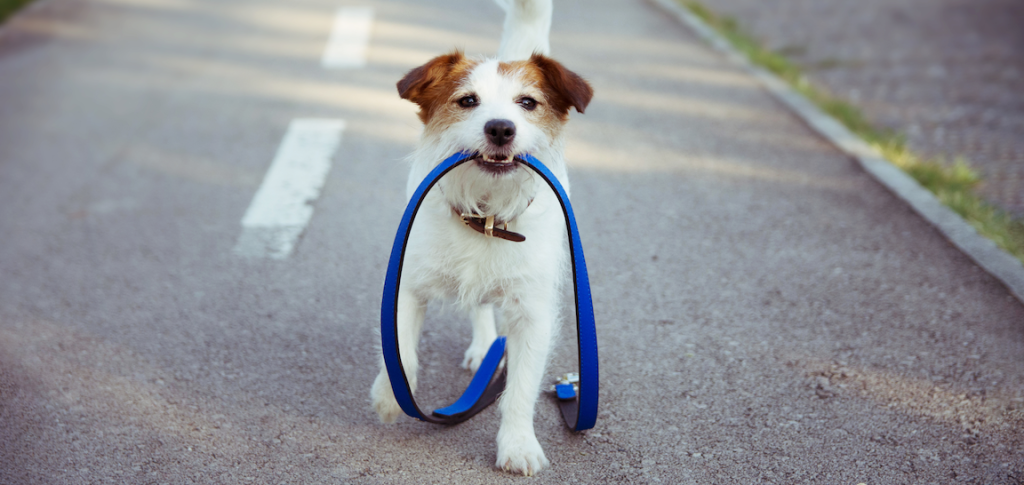
Try this Instead:
Consider purchasing a few different leash options that make it easier for you to choose to leash up your dog vs. letting them off-lead in on-leash spaces:
- Slip Lead. If it seems like an unnecessary hassle to put on your dog’s full gear for super short/quick trips, like going from the house to the car, or from your apartment to the garbage chute down the hall, consider purchasing a slip lead and using it just for these quick outings. Slip leads generally aren’t an appropriate option for regular walks, but they can be a really convenient and super speedy choice for transporting your dog quickly from point A to point B—and they’re far safer than not using any leash at all.
- Hands-Free Leash. If you really like having your hands free while on walks with your dog, you might consider purchasing a hands-free leash that secures around your waist. Expect that you’ll still need to hold the leash with your hands when you are passing close to people or other dogs, or if your own dog has some reactive tendencies and needs more active handling from you.
- Long Line. If you find yourself letting your dog off-leash in public parks that are designated on-leash, in empty tennis courts, etc.—because you really want to give your dog more freedom but you don’t have a safe off-leash space available to take them to on a regular basis—consider purchasing a 20 foot long line to allow your dog more freedom in these types of spaces. Just be sure to follow the guidelines outlined in point #1 so your dog doesn’t become an on-leash space invader.
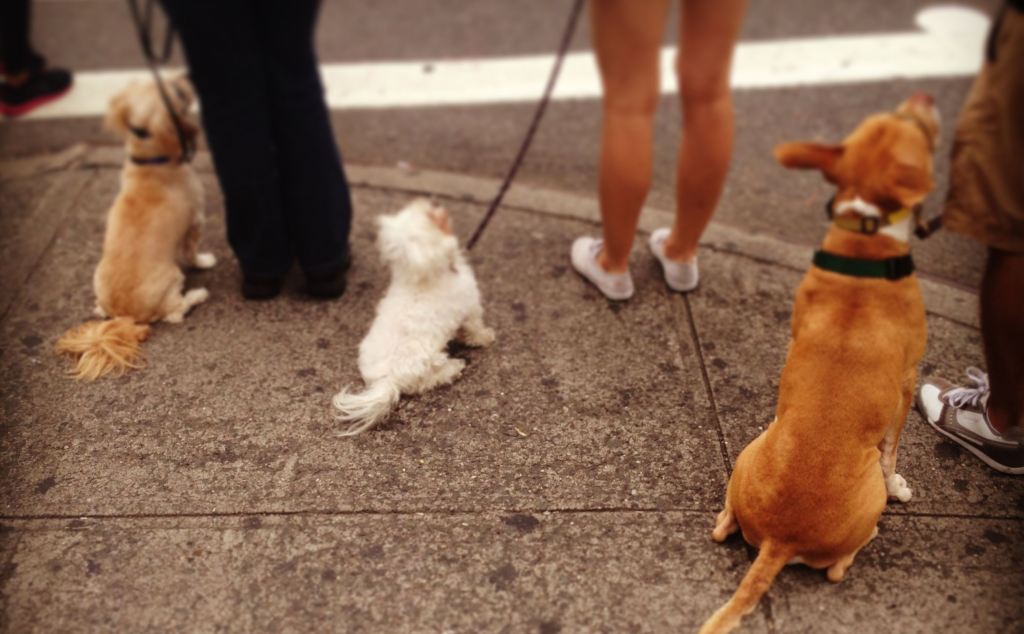
Know Better, Do Better
If you’re “guilty” of engaging in any of these behaviors, please don’t beat yourself up over it. They’re SO so common (hence the reason for this blog!).
I have heard countless clients say, “I WAS that dog owner, the one who let my friendly dog pull up to every other dog on walks, until I got my current fearful/reactive dog and realized how stressful/harmful that can be for other dogs and owners. I just had no idea.”
And, when Brian and I were very early in our dog training careers, before we had our own facility, we were 100% guilty of sometimes taking dog-selective dogs into the dog park to work on socialization—it’s not something we’d ever do now, but we did it then with the very best of intentions, and with what we thought was appropriate risk management (observing the dogs inside first, going at quiet times of day, not taking in any dogs with dangerous bite histories, etc.).
We don’t know what we don’t know. And, when we are caring, smart, responsible humans, we work to adjust our behavior when we learn a new way of doing things that can better protect the safety and wellbeing of our dogs and others in our community.
Weigh In!
What do you think? Have you and your dog been personally impacted by any of these high-risk behaviors? Do you have go-to tactics and strategies you use to keep your dog (and others in your community) safe when you and your dog are out in public? Share your thoughts at [email protected]
NEED TRAINING OR BEHAVIOR SUPPORT?
Check out the resources below!
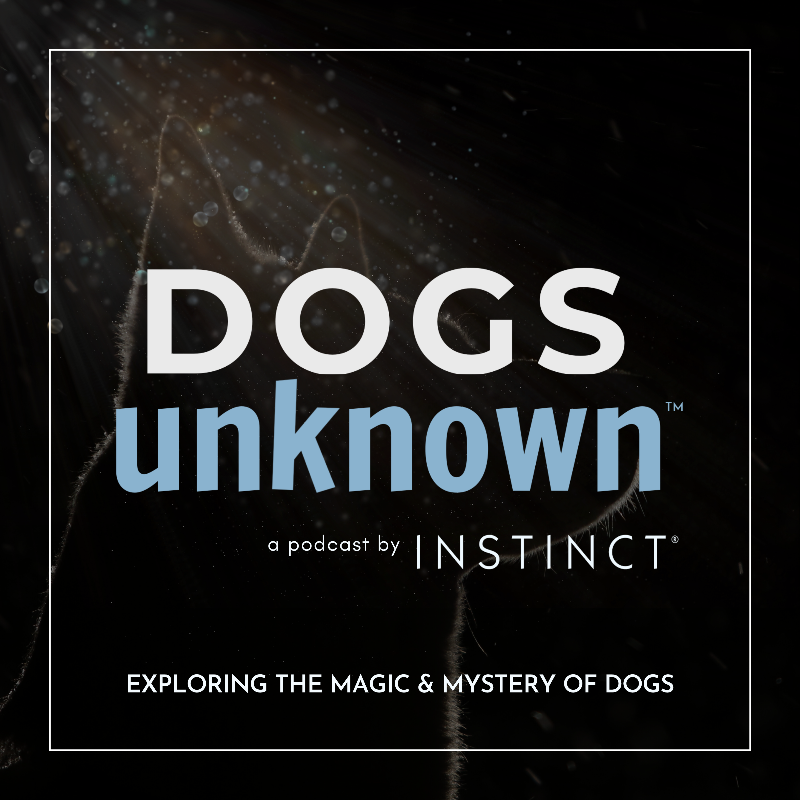
Check out Instinct’s award-winning podcast, Dogs Unknown (fka DogLab), hosted by Instinct Co-Founders Sarah Fraser (me!) and Brian Burton.
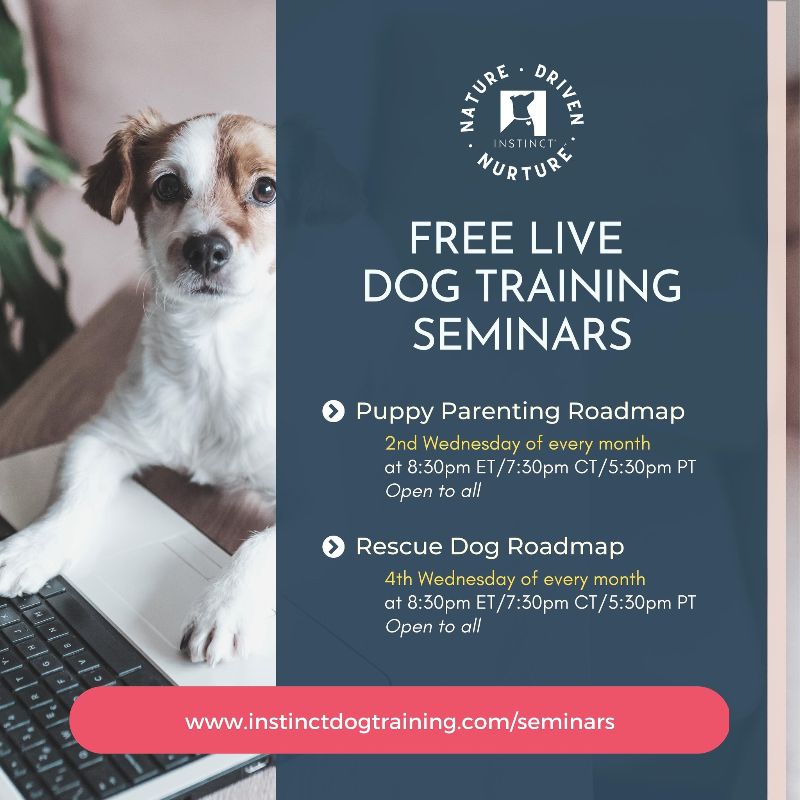
Join one of our free, live training & behavior seminars via Zoom!
Hosted by Instinct behavior consultants, these seminars include a 1 hr presentation plus live Q&A session. Open to all!
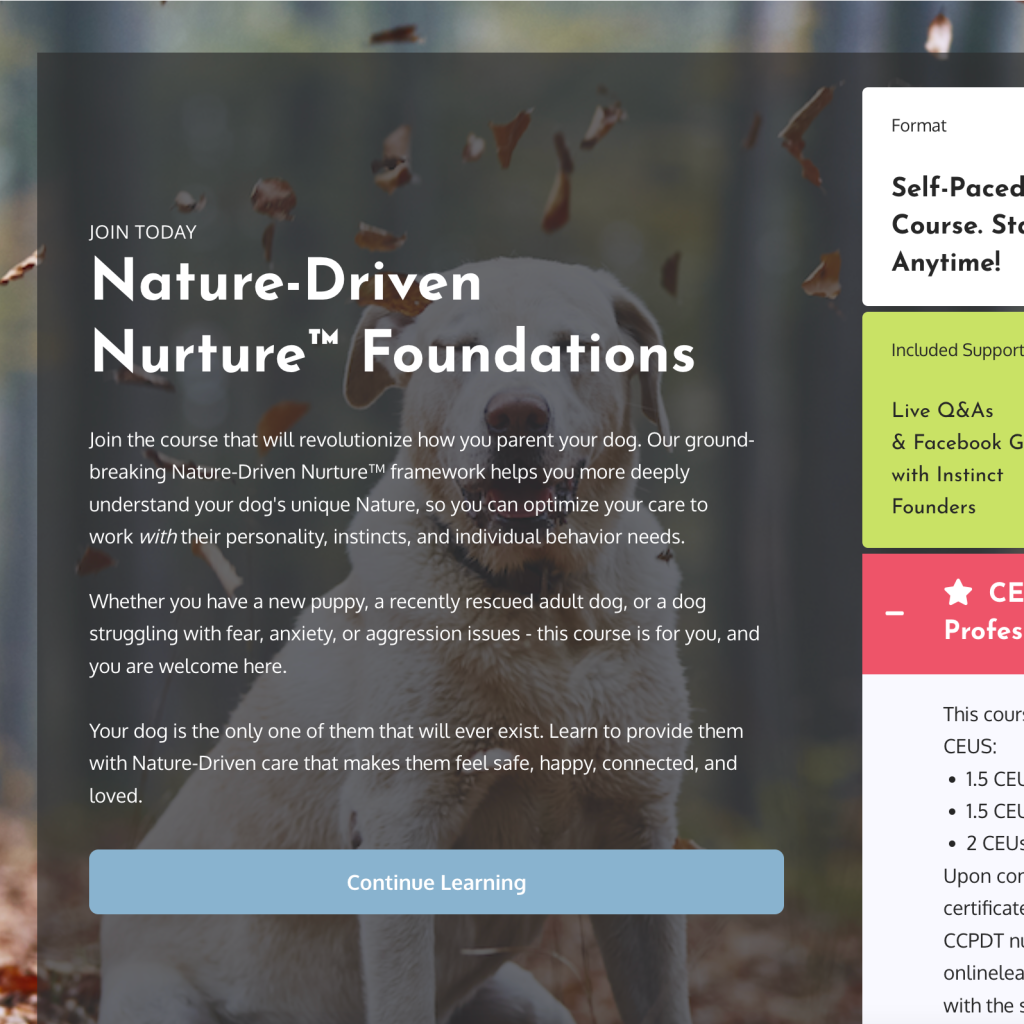
Sign up for the Nature-Driven Nurture Foundations course in our Online School. Learn our groundbreaking canine behavioral health framework that teaches you how to optimize your dog’s training & care based on their unique, individual Nature. This self-paced course includes:
- Access to private Alumni Facebook group
- Twice-monthly Zoom Q&As with Instinct co-founders
Or, contact your local Instinct for fully customized training & behavior support with certified, veterinarian-recommended trainers and behavior consultants.
